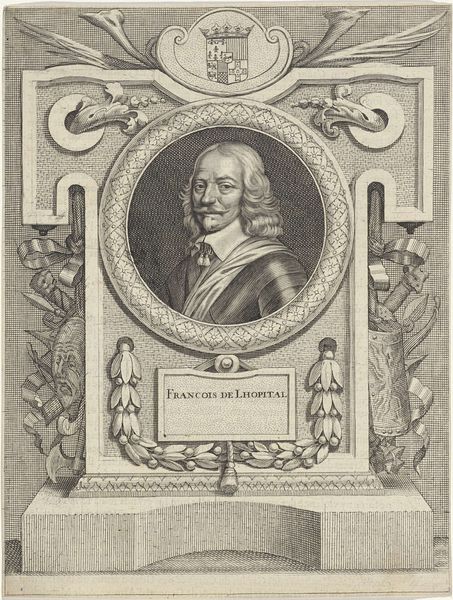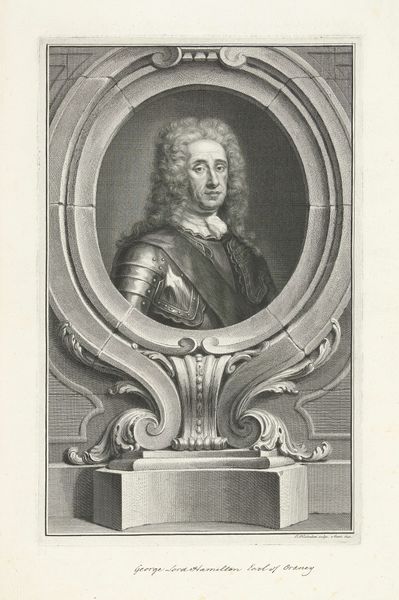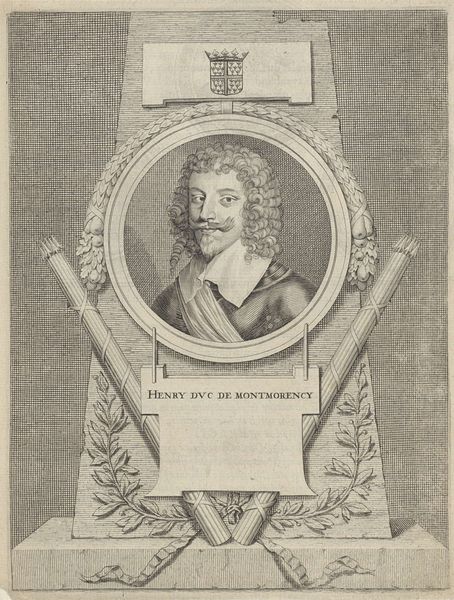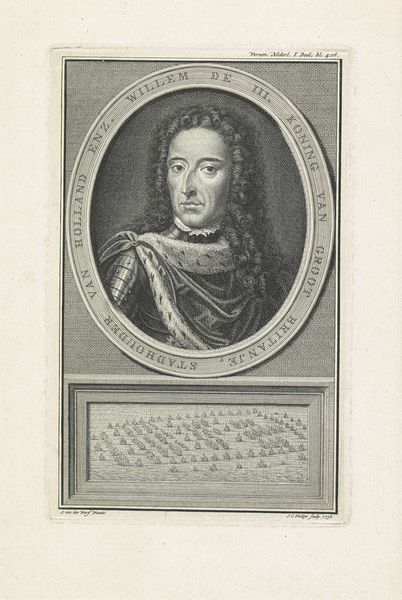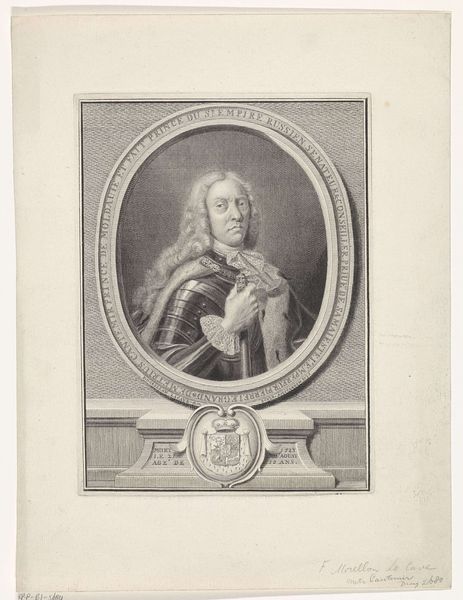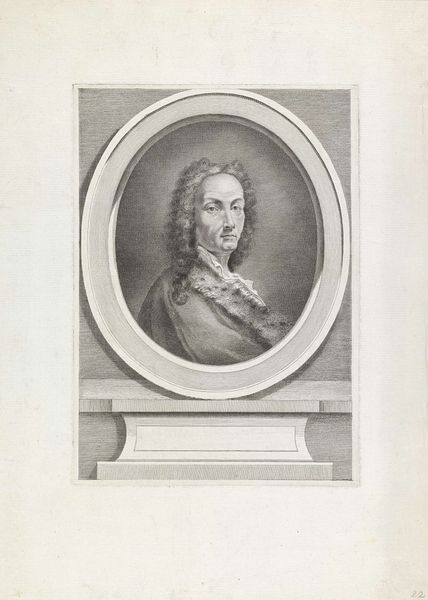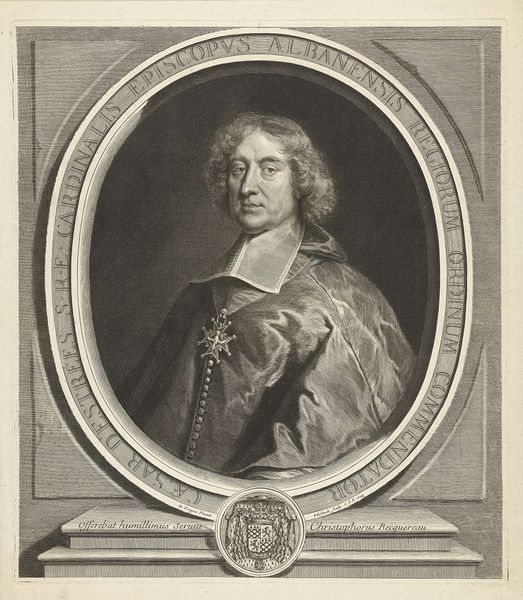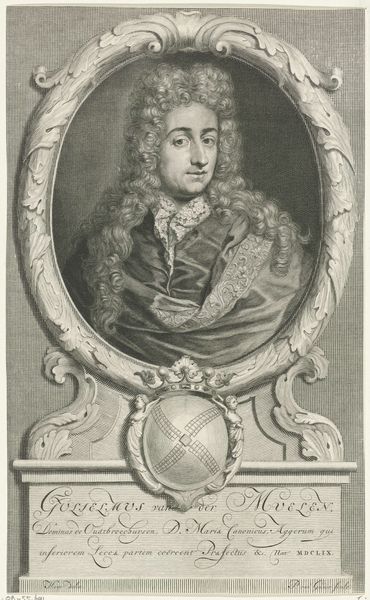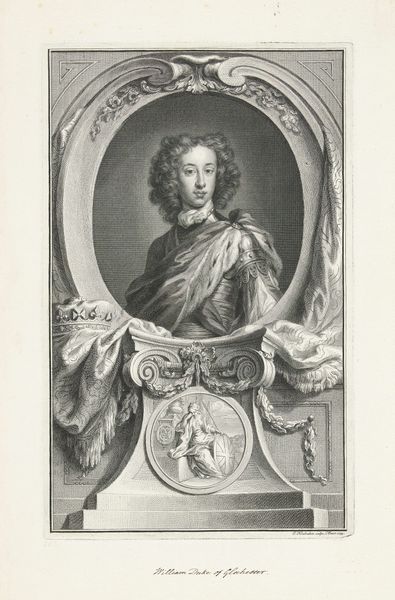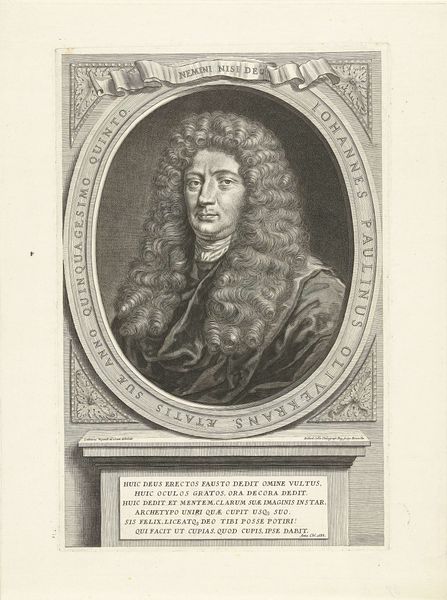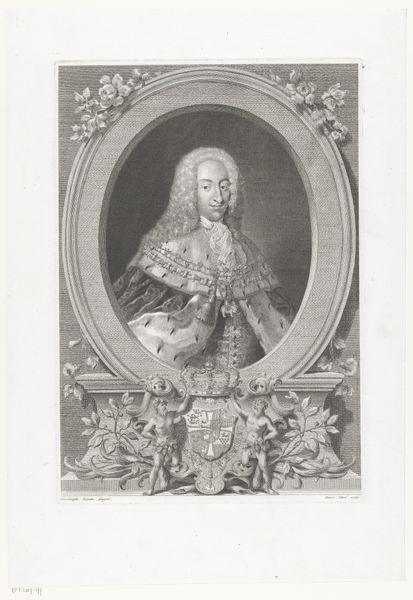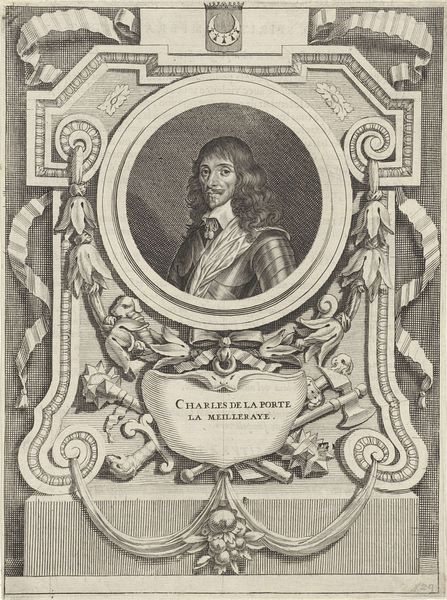
print, engraving
#
portrait
#
baroque
# print
#
old engraving style
#
historical fashion
#
history-painting
#
engraving
Dimensions: height 256 mm, width 196 mm
Copyright: Rijks Museum: Open Domain
Curator: Immediately, I see a powerful declaration of status and perhaps even anxiety regarding it—all packed within this finely wrought image. Editor: That’s an interesting initial take. Well, let me provide a bit of context. This is a portrait of Charles de Guise by Johannes Valdor, dating back to 1649. It's an engraving, meticulously rendered to capture the essence of the Duke. Curator: Essence indeed. The symbols practically scream ambition and a need for validation. I can't help but read this within the fraught social and political context of 17th-century European aristocracy, right? The meticulous detail speaks to wealth and status, but it's almost performative, don't you think? Look at the way his name and title is highlighted beneath the central figure of Charles de Loreine Dvc de Gvise, but how are we meant to read this now, in 2024? What narrative do we see represented? Editor: Ah, now you are keying into it. Notice the visual language—the helmet, the laurel wreath, and those watchful sphinxes at the base of the pedestal! It speaks of enduring power and military prowess—classical allusions to authority. And don't forget the family crest positioned right above Charles—emphasizing lineage, a dynasty in armour! But how those all that come together as symbolic messaging is something that would fascinate Jung for sure, right? I suppose, yes it is performative...in that case... Curator: Precisely! A very anxious performance! One cannot help but feel an air of desperate historical immortality seeking an audience in a distant future! How are we to reconcile the notion of dukedom and all its symbolic representations now as against how they were received then? Editor: And the very act of commissioning an engraving, of having one's image replicated, is itself a fascinating cultural ritual. In this moment Charles is being elevated to a new realm: something tangible that we still see as evidence! To leave a lasting legacy, ensuring one's presence transcends mortality. What I find endlessly interesting, is how visual elements weave a story and keep historical memories alive. How we create symbolism to create longer lasting notions and how are ideas become attached and anchored to something very real and easily understood. I think that, more than the Dukedom and ambition, is the point here: symbolic language. Curator: Well, thinking through the cultural politics certainly changes how I understand this image! Editor: Yes, seeing those symbolic meanings, changes my mind too! It is a worthwhile experience!
Comments
No comments
Be the first to comment and join the conversation on the ultimate creative platform.
